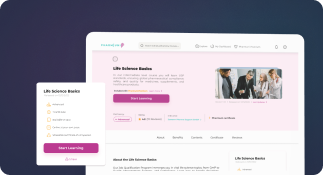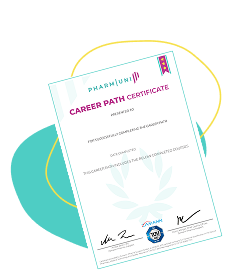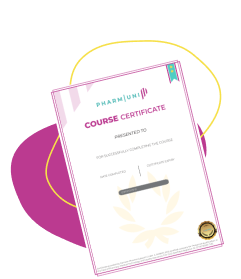Costs keep rising, regulators push harder, and stakeholders demand proof—not promises. You need wins that cut waste, save water, and slash energy use without risking GMP. Green pharma delivers that balance. Moreover, it strengthens margins, reduces supply shocks, and builds brand trust. Teams that act now lock in early advantages. Meanwhile, laggards scramble, spend more, and accept tighter limits. You can avoid that trap. This guide shows practical moves across R&D, manufacturing, utilities, QC/QA, procurement, and packaging. Furthermore, every recommendation respect validation, data integrity, and change control. You get feasible steps, tight metrics, and a roadmap that compounds results. Let’s turn sustainability from a presentation slide into daily practice. Sustainable Pharmaceutical Manufacturing turns intent into measurable results.
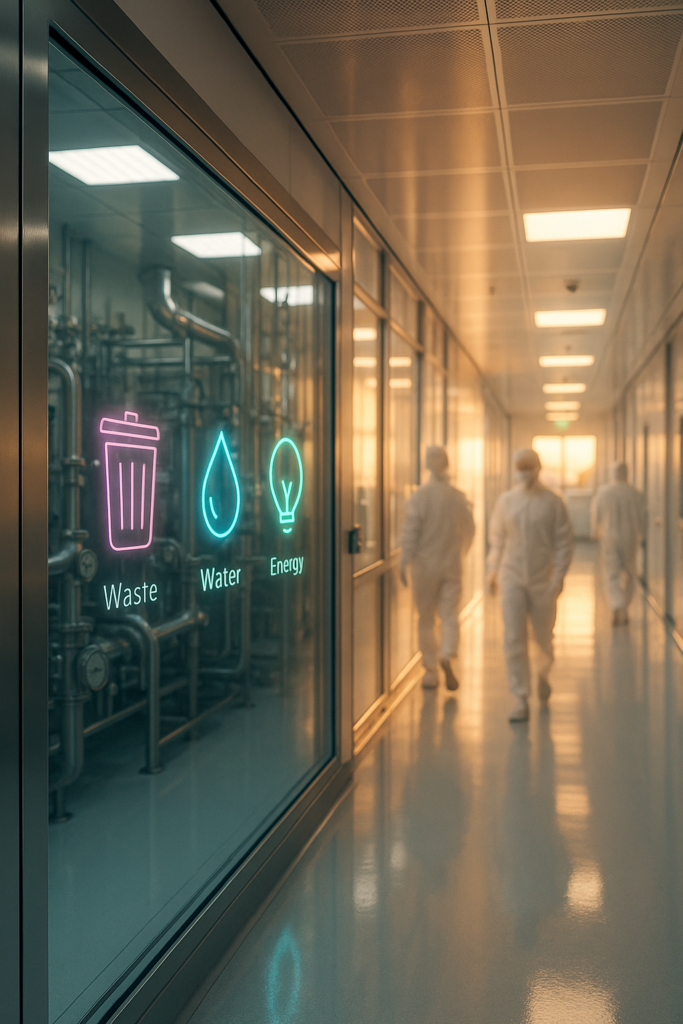
Green Pharma Strategy: Waste, Water, and Energy Wins in Practice
Green pharma strategy works only when it fits GMP operations. “In practice, sustainable pharmaceutical manufacturing starts with per-batch baselines and unit-operation meters. Therefore, build it into daily planning, not quarterly slogans. Start with a tight baseline for waste, water, and energy by product family. Meter at unit operations, so engineers see real drivers. Moreover, map each utility to its own process and acceptance limits. You then choose safe setpoint changes, right-sized pumps, and smarter cleaning cycles. Validation stays central. Document intended impacts, sampling plans, and alarm responses before trials. Consequently, teams move fast without surprises during audits. Keep changing control simple and repeatable.
Next, stage improvements from low risk to capital heavy. Begin with maintenance fixes that end leaks and false loads. Then tune CIP/SIP durations using validated conductivity endpoints. Moreover, raise chiller setpoints where specs allow and reduce non-critical air changes after hours. Packaging follows right-size cartons, reduce headspace, and standardize components. Finally, run a monthly “resource intensity” review with visible leaderboards. The rhythm converts pilots into standards. Furthermore, supplier scorecards and short training modules lock changes in. Track payback and CO₂e together. As a result, savings persist, and batch records continue to speak for themselves.
- Set per-batch targets linked to each product family.
- Instrument unit operations with sub-metering to reveal true drivers.
- Eliminate waste quickly by fixing leaks, tightening setpoints, and trimming CIP/SIP safely.
- Lock compliance with predefined acceptance criteria, sampling plans, and alarm limits.
- Institutionalize gains through monthly reviews, SOP updates, and published standards.
Sustainable Manufacturing Checklist: Quick Wins by Function
Use this Sustainable Pharmaceutical Manufacturing Checklist to turn goals into daily routines.
- R&D solvent swaps: Replace high-impact solvents with greener ones that meet method specs.
- Scale-up yield fixes: Remove chronic losses at transfer points to cut material waste.
- CIP/SIP tuning: Shorten cycles using validated parameters that still hit kill and clean.
- Compressed air leaks: Find and fix leaks; trim pressure bands to drop kWh.
- Chiller setpoints: Raise chilled-water temperature where specs allow to save energy.
- Ventilation set-backs: Reduce air changes in non-critical zones during off-hours safely.
- Lighting controls: Add occupancy sensors in corridors and ancillary rooms.
- Solvent recovery: Install distillation where purity targets remain achievable.
- Right-size packaging: Trim headspace and switch to lighter, compliant materials.
- Transport consolidation: Plan full-truck shipments and avoid unnecessary cold chains.
- Supplier tiering: Prioritize vendors with audited environmental performance.
- Digital work orders: Route utility alarms to maintenance with clear SLAs.
Sustainable Pharmaceutical Manufacturing Benchmarks: From Compliance to Competitive Advantage
Lean quality reduced defects; green pharma reduces resource intensity. However, you still follow procedures and protect patient safety. Focus on utility baselines per product family, not generic site totals. Benchmarks matter because sustainable pharmaceutical manufacturing depends on transparent, comparable KPIs.
Compare lines, not legends. Run cross-site “waste, water, energy” leaderboards with context (batch size, run length, product class). Additionally, blend engineering KPIs with financial ones. Finance cares when kWh per batch ties to unit cost. Quality cares when changes respect validated boundaries. Everyone wins when numbers of guide decisions and audits back them up.
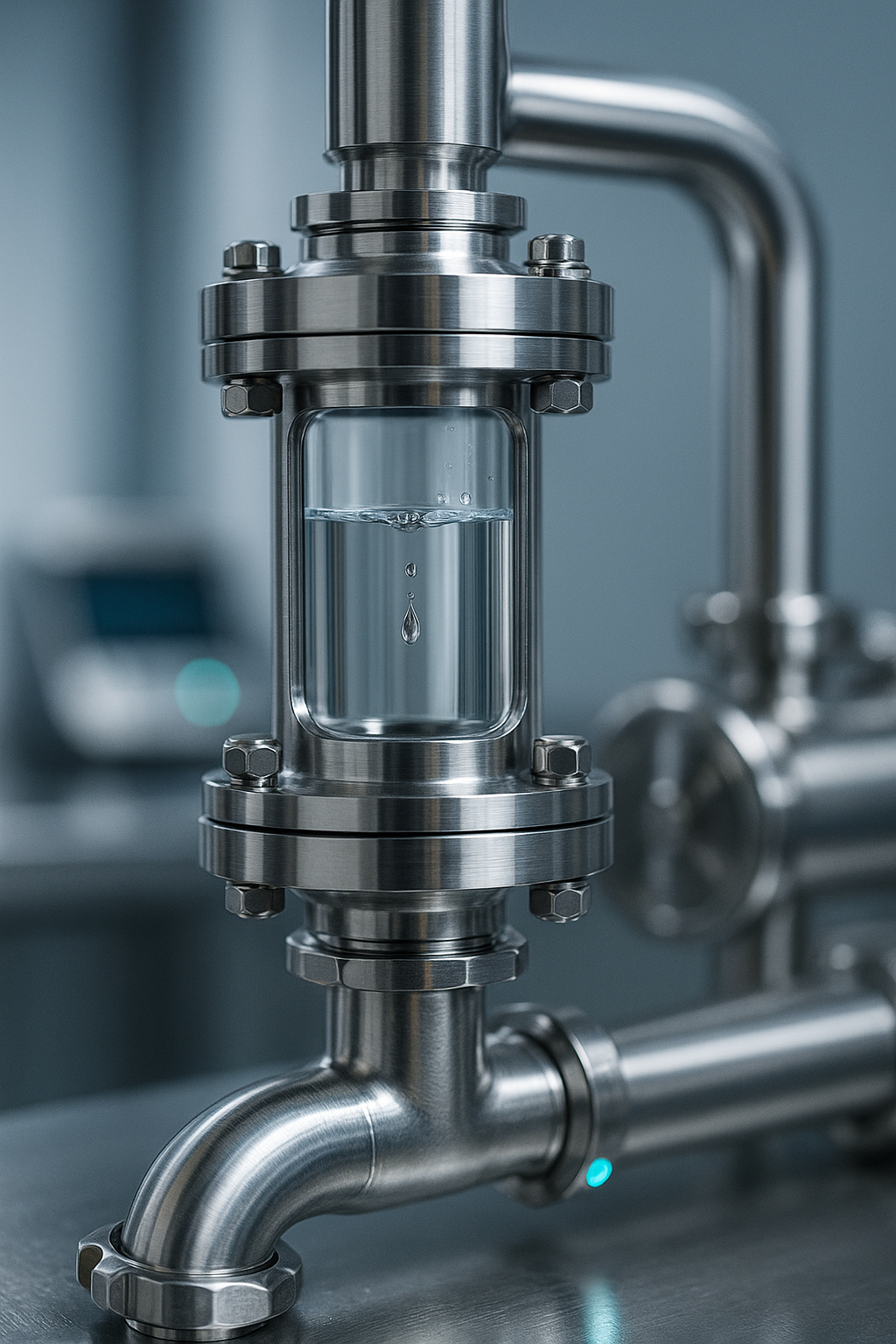
Waste in Green Pharma: Zero-Loss Manufacturing
Lost material hurts margins and inflates environmental impact. Start with a mass balance step by step. Therefore, ghost losses in transfer, filtration, and filling. Validate new tubing sizes, pump curves, and valve timings to lift yield. Meanwhile, track scrap rates, rework, and deviations that trigger disposal. Remove repetitive errors through CAPA that targets root causes, not symptoms.
Packaging waste reduction compounds results. Right-size cartons, move to mono-materials, and design for return or recycling. Additionally, switch to returnable totes for intra-site moves. Where regulations permit, standardize components across SKUs to simplify inventory. Finally, measure waste in currency and CO₂e to defend investments clearly. Decision-makers say yes when savings speak two languages: cost and carbon.
Water in Green Pharma: Circular Utilities Without Risk
Water security now threatens uptime as much as energy price spikes. Map every water user: boilers, cooling towers, CIP, humidification, and domestic uses. Then separate streams by quality, so you avoid over-treating everything. Non-product contact circuits often accept recycled or harvested sources. Moreover, condensate return cuts both water and fuel demand in one move. Validate conductivity, bioburden, and endotoxin control where relevant.
Cooling towers deliver fast wins. Optimize cycles of concentration, improve drift control, and automate dosing. Additionally, inspect fill and nozzles to recover performance. In process, shorten CIP rinses with precise endpoints from conductivity curves. Finally, monitor water intensity per batch to lock gains. Teams repeat what they measure, and dashboards keep attention high.
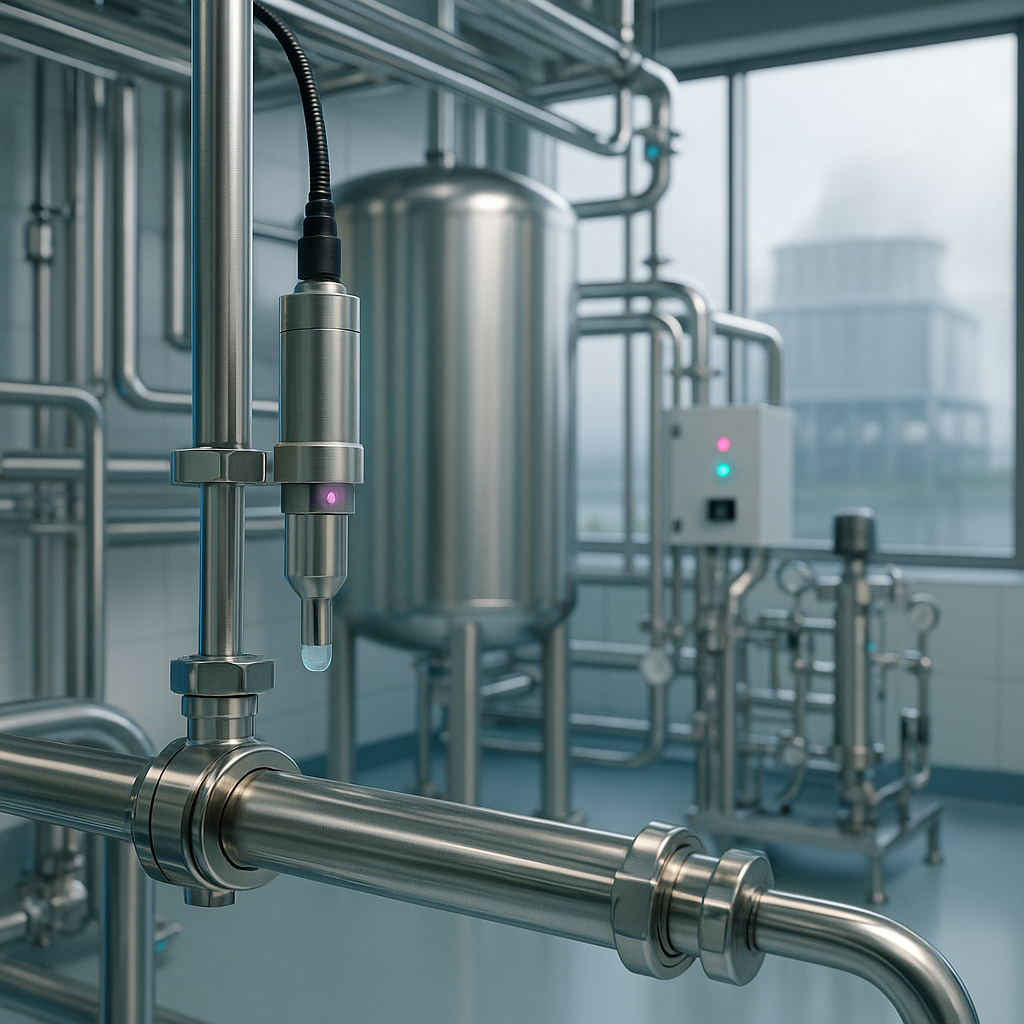
Metrics That Matter
Select KPIs that prove sustainable pharmaceutical manufacturing without creating audit risk.
Material yield (%)
Track stepwise yield to expose loss hotspots. Additionally, link fixes to validated changes and confirm stability.
Energy intensity (kWh/batch)
Baseline by product family to avoid noise. Moreover, align with OEE to make energy part of uptime talks.
Water footprint (L/kg product)
Meter at unit operations, not just the main feed. Then target rinses and cooling bleed where variance spikes.
Solvent recovery (%)
Compare recovered purity to method specs. Furthermore, route recycled streams to appropriate steps safely.
OEE with utility overlay
Add kWh and L overlays to runtime and quality. Consequently, operators see cost, carbon, and yield together.
CO₂e per batch
Include Scope 2 location-based and market-based views. Also, attach unit costs to show quick paybacks.
Deviation rate tied to utilities
Flag excursions from temperature, RH, or WFI parameters. Therefore, fix root causes, not only close events.
Cost to serve (eco-cost added)
Extend landed cost with energy, water, and waste. Finance then understands total delivered impact.
Supplier sustainability score
Tier vendors by audited criteria and performance. Procurement gains leverage during negotiations.
Training hours on green SOPs
Track adoption through completed modules. Moreover, test knowledge to ensure safe practice.
Want structured training that shortens the learning curve?
Energy Wins in Sustainable Pharmaceutical Manufacturing: Smarter, Leaner, Cleaner
Energy drives costs and carbon in pharma plants. Therefore, start with efficiency before new supply. Map streams across HVAC, clean utilities, and chillers. Then quantify loads per batch, not per year, so owners act. Sub-meter unit operations to expose drift and idle loss. Right-size fans, pumps, and compressors to cut wear and ease validation. When demand drops first, electrification and renewables deliver bigger, safer gains. Energy wins accelerate when teams treat sustainable pharmaceutical manufacturing as an efficiency-first program.
Change control binds this work to GMP. Document setpoints, sampling plans, and alarms in advance. Additionally, align QA on acceptance criteria and trial windows. Each approved tweak becomes a template for similar lines. Engineers apply playbooks fast while protecting data integrity. Capital follows evidence: efficient chillers, heat pumps where temperature allows, and smart airflow control. Thus, sites cut kWh without surprises, and audits see control.
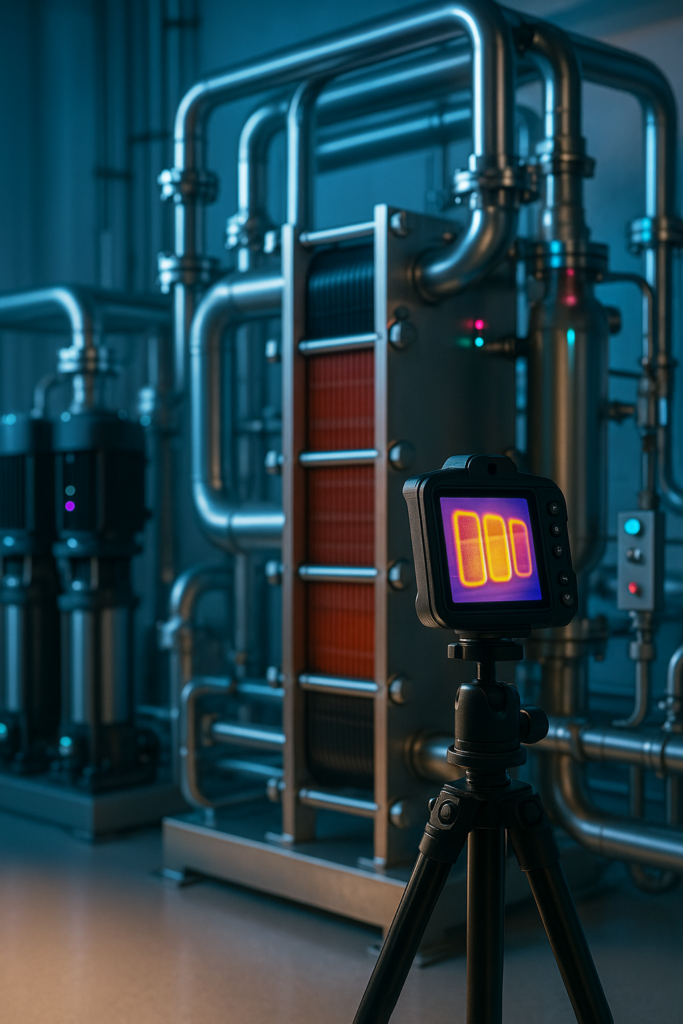
Electrification and High-Efficiency Equipment
Electrify heat where temperature requirements sit below high thresholds. Heat pumps efficiently serve low- to medium-grade loops for preheating WFI feed, hot water, and space conditioning. Moreover, variable frequency drives trim fan and pump waste across air handlers, chilled-water pumps, and vacuum systems. Cleanrooms benefit when airflow tracks occupancy and classification rather than fixed schedules. However, validate particle recovery and temperature/RH stability during trials. Data from continuous monitoring turns debate into agreement and speeds approvals. Compressors, fans, and motors are right to real loads; oversizing hides losses and inflates standby energy. Replace legacy chillers with high-seasonal-efficiency units, then raise chilled-water setpoints within validated ranges. Insulate distribution, tune control loops, and eliminate bypasses that create false load. Link operator dashboards to alarms that surface idle conditions fast, so teams act before energy drifts quickly.
- Prioritize low-to-medium temperature circuits for heat pumps after efficiency fixes.
- Upgrade chillers to higher seasonal performance; adjust setpoints within limits.
- Install VFDs on fans and pumps; tune PID logic to steady flow.
- Match cleanroom airflow to use; confirm recovery and classification data.
- Coach shifts to spot false loads, leaks, and override habits early.
Renewables, Heat Recovery, and Thermal Integration
Once efficiency has lowered demand, shift the supply mix. Rooftop or carport solar offsets daylight baseloads without process changes. Battery storage smooths peaks and supports critical circuits. For thermal needs, deploy solar thermal for preheating and recover high-grade heat from compressors, sterilizers, and dryers. Keep flows segregated to prevent contamination risks and to simplify validation. Build short, local heat-recovery loops so losses stay low and commissioning remains simple. Match temperatures: send low-grade heat to space conditioning, medium-grade to process hot water, and reserve high-grade for sterilization where appropriate. Phase-change or hot-water storage can bridge shift changes and weekend starts smoothly. Finally, align finance with energy by signing renewable contracts or PPAs that stabilize costs and deliver auditable carbon reductions. Clear metering, documented controls, and alarm logic keep auditors confident while savings accumulate steadily over time.
- Start with efficiency; size renewables to the new, lower load.
- Design heat-recovery loops short to reduce losses and risks.
- Use storage to shift heat and power across peaks and startups.
- Verify segregation, cleanliness, and monitoring before tying into GxP areas.
- Secure PPAs that match operating hours and produce auditable certificates.

Governance & Change Management
Governance converts projects into policy, so sustainable pharmaceutical manufacturing persists after audits.
- Executive mandate: Set site-level targets per batch. Additionally, tie bonuses to certified results.
- Cross-functional steering: Include QA, QC, validation, EHS, engineering, and finance. Therefore, decisions balance speed and safety.
- CAPEX gating: Require resource-intensity KPIs in all business cases. Moreover, track realized vs. promised savings.
- GxP-safe change control: Pre-define templates for setpoint changes and new meters. Documentation then scales faster.
- Digital twins and metering: Model scenarios before you touch equipment. Meanwhile, high-resolution meters prove wins quickly.
- Operator incentives: Reward teams for sustained improvements. Additionally, celebrate “no-drama” runs that meet specs with less energy.
- Supplier contracts: Bake utility-reduction clauses into agreements. Consequently, vendors share responsibility for outcomes.
- Internal audits: Add “resource intensity” to audit checklists. Moreover, close findings with measurable fixes.
- Training pathways: Create micro-learning for green SOPs. Then refresh annually with new case studies.
- Communication rhythm: Share monthly dashboards and lessons learned. Visibility keeps momentum alive.
Green Pharma Roadmap: Your 90-Day Action Plan
Green pharma momentum builds fastest with a short, disciplined plan. Therefore, anchor the first 90 days around measurement, low-risk pilots, and rapid standardization. Start by baselining waste, water, and energy per product family and per batch. Then map utilities to unit operations, so owners see true drivers. Moreover, agree on change-control templates up front. You move faster when acceptance criteria, sampling plans, and alarms are already defined. Finance joins early to validate payback math and protect capital flow.
Next, select pilots that deliver proof without jeopardizing compliance. Pick one utility fix, one process tweak, and one packaging change. Additionally, sub-meter the pilot areas to capture clean before/after data. Weekly reviews keep drift in check and remove roadblocks. Finally, publish a one-page dashboard that shows kWh/batch, L/kg, yield, and CO₂e. Visibility creates urgency; urgency sustains results. By day 90, convert successful pilots into SOP updates and training. The cycle then repeats on adjacent lines with less friction and faster wins.
- Week 1–2: Baseline per-batch metrics; tag top 10 resource hotspots by step.
- By Day 10: Align QA on protocols, criteria, and alarms; pre-approve trial templates.
- Weeks 2–4: Select three low-risk pilots; confirm risk assessments and owner accountability.
- At Day 30: Install sub-meters; validate data capture; launch operator dashboards.
- Weeks 5–8: Execute pilots; hold weekly checks; remove leaks, false loads, and overrides.
- By Day 90: Lock in wins via SOPs, training, and supplier scorecards; schedule scale-up.
Conclusion
Sustainability works when it lives inside daily operations. Teams that chase headlines burn time; teams that chase per-batch metrics bank savings. Moreover, leaders who respect GMP and data integrity move faster because governance already fits. Begin with baselines, pick pilots that avoid risk, and document outcomes with care. Then scale wins across similar equipment and product families. Over time, your sites consume less, spend less, and perform better. Auditors see control, finance sees margin, and customers see commitment. That trifecta builds resilience in a volatile market.
References:

Stephanie Männicke
Digital Marketing Especialist at Zamann Pharma Support, brings 8 years of experience in Corporate and Digital Communication. Specializing in Digital Marketing and Content Creation, Stephanie is currently focused on creating strategic content for Pharmuni's networks, especially content on topics such as recruitment, onboarding and employer branding. Outside of work, Stephanie is a mum, a crocheter and a movie fan. An avid reader and in search of expanding her knowledge, Stephanie is always looking for ways to innovate communication in the digital environment and connect people in a genuine way.
FAQs
Start with per-batch metrics: kWh/batch, L/kg water, stepwise yield, solvent recovery %, and CO₂e/batch. Then add OEE with utility overlays. Segment by product family to avoid noise. Finally, publish a simple leaderboard so owners act fast.
Begin with “efficiency first.” Raise chilled-water setpoints within validated limits. Match cleanroom airflow to occupancy and class, then verify recovery times. Install VFDs on fans and pumps. Capture waste heat for hot-water preheat. Document setpoints, sampling plans, and alarm logic before trials.
Optimize cooling tower cycles of concentration and drift control. Shorten CIP rinse steps using conductivity endpoints. Return condensate to reduce both water and fuel. Separate streams by quality so you avoid over-treating. Meter unit operations to expose rinse overshoot and unexpected bleed.
Tie utility meters to batches and work orders. Convert kWh and liters to unit cost and CO₂e using site factors. Keep a validation packet: protocol, acceptance criteria, monitoring plan, and change-control approvals. Compare pre/post data over multiple runs to show stability, not luck.
Create a cross-functional steering group with QA/Validation, Engineering, EHS, and Finance. Gate CAPEX with resource-intensity KPIs. Update SOPs after each successful pilot, then train operators and maintenance. Add “resource intensity” to internal audits. Finally, score suppliers on environmental performance and contract expectations.

Pharma Industrial Training Certificate: Career Outcomes, Jobs, and ROI (2025)
A Pharma Industrial Training Certificate can significantly enhance your career in the pharmaceutical industry. This certificate equips you with hands-on experience in Good Manufacturing Practices

Certificate in Pharmaceutical Manufacturing: Complete Career Guide (2025)
A Certificate in Pharmaceutical Manufacturing gives you a fast, structured way into GMP-based production roles. You learn core topics such as GMP rules, manufacturing processes,

Computer System Validation in Pharma 2025 Guide
Computer System Validation in pharma keeps your digital systems reliable, compliant, and inspection ready. In this practical CSV guide for 2025, you learn core regulations
